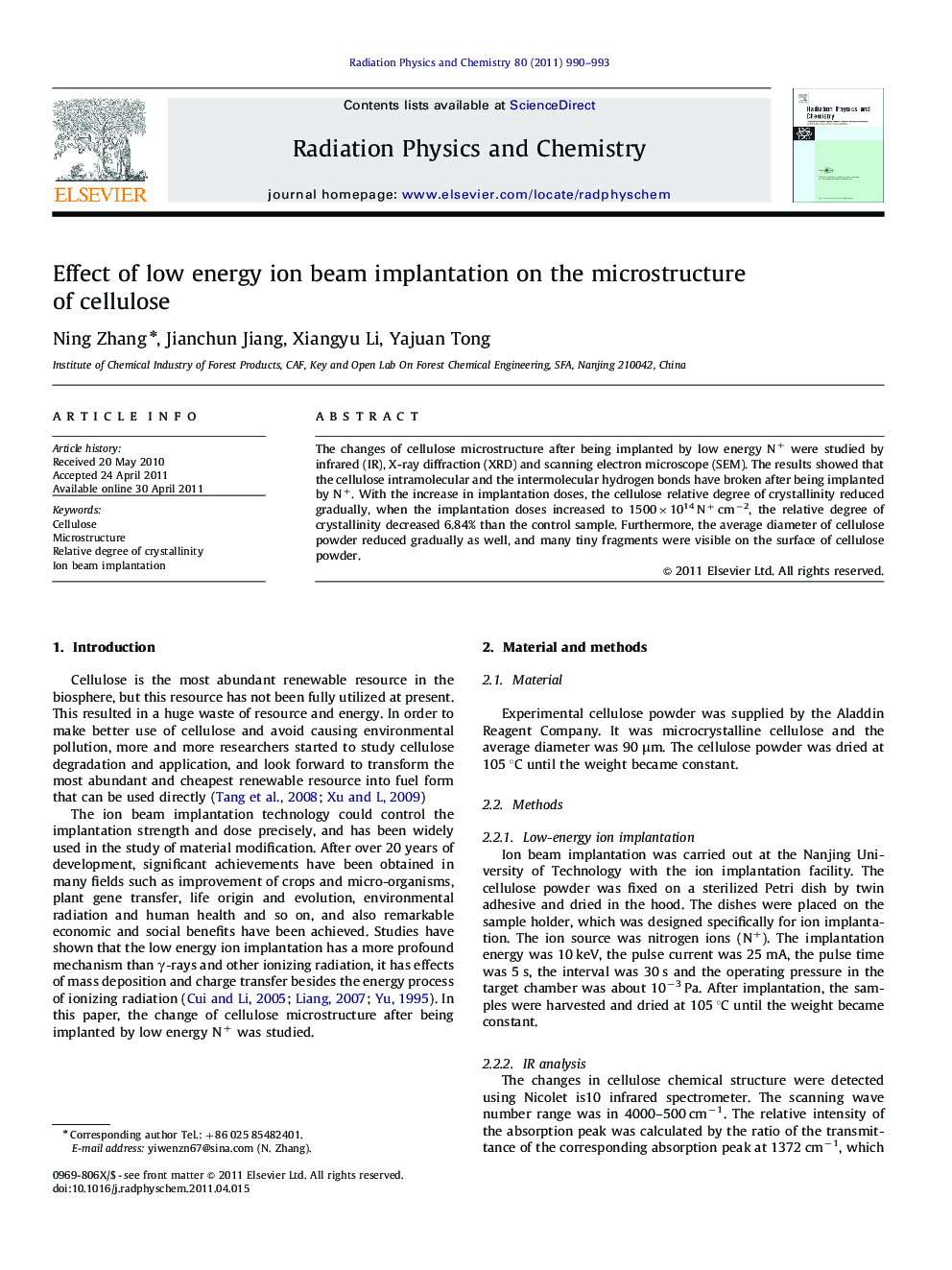| Article ID | Journal | Published Year | Pages | File Type |
|---|---|---|---|---|
| 1884299 | Radiation Physics and Chemistry | 2011 | 4 Pages |
The changes of cellulose microstructure after being implanted by low energy N+ were studied by infrared (IR), X-ray diffraction (XRD) and scanning electron microscope (SEM). The results showed that the cellulose intramolecular and the intermolecular hydrogen bonds have broken after being implanted by N+. With the increase in implantation doses, the cellulose relative degree of crystallinity reduced gradually, when the implantation doses increased to 1500×1014 N+ cm−2, the relative degree of crystallinity decreased 6.84% than the control sample. Furthermore, the average diameter of cellulose powder reduced gradually as well, and many tiny fragments were visible on the surface of cellulose powder.
► Using low energy N+ processed cellulose, in order to open up a new way of cellulose degradation. ► The cellulose intramolecular and the intermolecular hydrogen bonds broke after being implanted by N+. ► The relative degrees of crystallinity of cellulose decreased after being implanted by N+.
